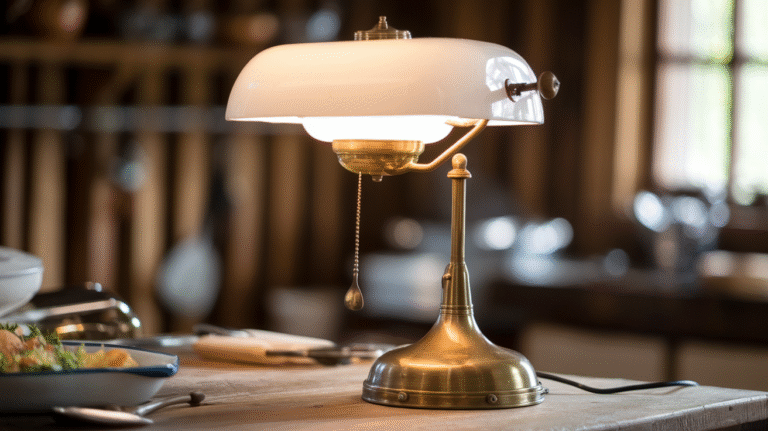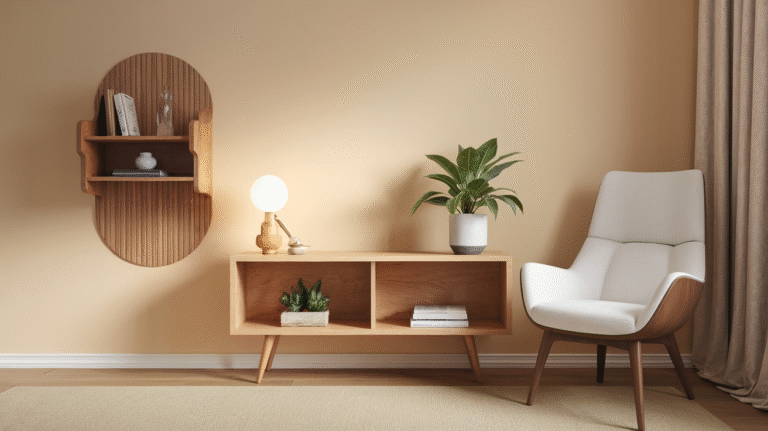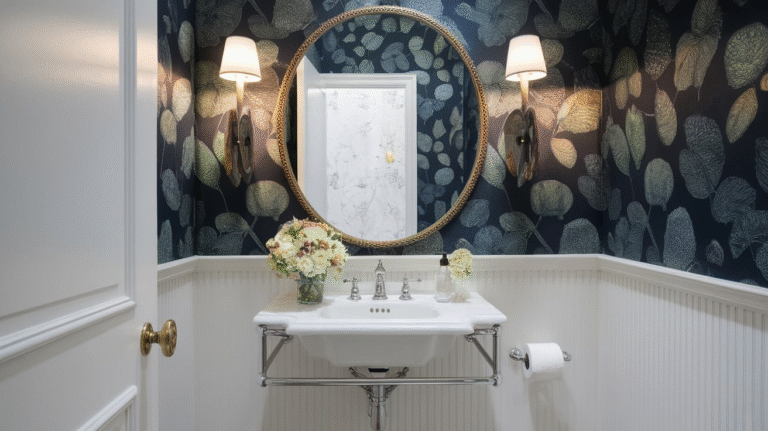24 Top Ceiling Design Ideas
Ceilings often get the least attention in home design, yet they can make or break a room’s personality.
Think of your ceiling as the fifth wall — it’s the unsung hero that frames your space.
A thoughtfully designed ceiling can turn a basic room into an elegant retreat or a bold statement of style.
Below, I’ll share 24 ceiling design ideas that will inspire you to look up and dream big.
Each idea includes practical insights, materials to consider, and tips on how to make it your own.
1. Coffered Ceilings
Coffered ceilings are like the tailored suit of interior design — structured, timeless, and instantly elegant. Originating from ancient Greek and Roman architecture, these ceilings feature sunken panels, usually in a square or rectangular grid.
Why it works: The depth and symmetry of a coffered ceiling add visual interest and sophistication. Homes with 9-foot or higher ceilings benefit most because the recessed design gives the illusion of even more height.
Pro tip: Use wood beams or MDF panels for cost efficiency. Painting the coffers a contrasting color from the base adds drama — think white panels with navy or charcoal grids.
2. Tray Ceilings
Tray ceilings resemble an inverted tray — flat in the center with raised borders around the edges. They create a subtle layering effect that gives rooms a luxurious dimension.
Best for: Dining rooms, bedrooms, or entryways where you want understated elegance.
Stats worth noting: According to Zillow, homes with unique ceiling details like trays or beams sell for up to 3% more than comparable listings.
Design tip: Add LED strip lighting inside the tray for a floating glow. Pair it with crown molding to soften edges and make the design feel intentional.
3. Beam Ceilings
Exposed beams bring rustic charm and architectural integrity. Whether real wood or faux beams, they add warmth and texture that plain ceilings lack.
Materials: Choose between reclaimed wood for authenticity or polyurethane faux beams for lighter weight and easy installation.
Personal tip: I once installed faux oak beams in my living room. The result? Guests thought I’d inherited a mountain cabin. That’s the magic of visual texture.
4. Vaulted Ceilings
Vaulted ceilings create that “wow” factor — the kind that makes you unconsciously take a deep breath when you walk in. They draw the eye upward and make spaces feel expansive.
Variations: Barrel vaults, groin vaults, or cathedral-style vaults.
Key advice: Keep proportions balanced. Large vaults require strong lighting; consider suspended chandeliers or multiple pendants to avoid shadow pockets.
5. Cathedral Ceilings
Similar to vaulted ceilings but symmetrical, cathedral ceilings have equal sloping sides that meet at a central ridge. They’re often found in churches and grand living spaces.
Energy note: While stunning, they can increase heating and cooling costs by up to 25% due to greater air volume. Insulation and ceiling fans are must-haves.
Style tip: Use tongue-and-groove wood planks for added warmth, or paint the surface white to amplify natural light.
6. Wood Panel Ceilings
Wood-panel ceilings feel both timeless and cozy. They work beautifully in cabins, cottages, or modern homes aiming for a natural vibe.
Popular woods: Cedar, pine, or oak. Cedar’s aroma even helps deter insects — a hidden bonus.
Pro suggestion: Paint or stain panels based on your mood. Dark wood gives depth and intimacy; light wood expands space and light.
7. Beadboard Ceilings
Beadboard brings a hint of seaside charm. Those narrow vertical planks with signature grooves are perfect for farmhouse kitchens or breezy porches.
Budget-friendly tip: MDF beadboard panels can mimic the look of real wood for half the price. Paint them in crisp white or soft pastels for a clean, classic effect.
8. Metal Ceilings
Pressed tin or metal ceilings harken back to the Victorian era, but they’ve made a sleek modern comeback.
Modern twist: Use matte black or brushed nickel finishes instead of traditional silver.
Fun fact: Metal ceilings were originally fire-resistant alternatives to plaster — durability meets design!
Installation note: They reflect light well, so pair them with warm bulbs to avoid a cold, sterile vibe.
9. Pop Ceiling Designs
Pop (Plaster of Paris) ceilings are popular in modern homes for their flexibility. You can mold them into geometric, circular, or layered patterns, often paired with LED lighting.
Why it’s trending: The layered look adds depth and can hide unsightly wiring or fixtures.
Creative idea: Incorporate hidden color-changing lights for mood shifts — calm white for morning, soft amber for evenings.
10. Gypsum Ceilings
Gypsum ceilings are sleek, durable, and moisture-resistant — making them a go-to for modern apartments.
Why it stands out: They allow endless customization. From curved waves to clean grids, gypsum adapts to almost any design vision.
Maintenance bonus: Easy to paint and repair, unlike plaster which can crack over time.
11. False Ceiling with Lighting
False ceilings are more than decorative — they’re functional. They conceal wiring, improve acoustics, and enhance ambiance through integrated lighting.
Design advice: Mix recessed lights, cove lights, and LED strips for a layered lighting effect. This creates a soft, luxurious glow that regular overhead lights can’t achieve.
Statistic: According to interior design reports, 70% of modern living rooms now incorporate false ceilings primarily for lighting and sound insulation.
12. Painted Ceilings
Color can dramatically transform how your ceiling feels. A dark ceiling lowers the visual height and adds intimacy, while a light color expands space.
Trend alert: In 2025, earthy tones and terracotta hues are leading ceiling paint trends, replacing plain white.
Personal tip: Try painting your ceiling the same color as your walls for a seamless, cocooning effect — especially cozy in bedrooms or libraries.
13. Wallpapered Ceilings
Who says wallpaper belongs only on walls? Ceiling wallpaper can surprise and delight, especially in small or transitional spaces.
Design tip: Choose subtle patterns like botanical prints or metallic textures. Avoid overly busy designs in low-ceiling rooms.
Pro move: Coordinate ceiling wallpaper with neutral walls to let the design breathe.
14. Glass Ceilings
If your goal is to flood a space with natural light, glass ceilings are unbeatable. They’re common in sunrooms or modern extensions.
Energy consideration: Use double-glazed or tinted glass to control heat gain and UV exposure.
Inspiration: Imagine sipping coffee under a soft morning sky without leaving your living room — that’s the glass ceiling experience.
15. Stretch Ceilings
A stretch ceiling involves a PVC or fabric sheet stretched across a lightweight frame. It’s sleek, reflective, and can even host printed designs.
Advantages: Moisture-resistant, customizable in shape, and quick to install.
Stat: The global stretch ceiling market is projected to grow by over 6% annually through 2030 due to its durability and aesthetic versatility.
16. Bamboo Ceilings
Bamboo ceilings blend sustainability and beauty. They add texture while being eco-friendly — bamboo regenerates within 3 to 5 years, far faster than hardwoods.
Perfect for: Tropical, bohemian, or eco-conscious designs.
Tip: Combine bamboo panels with soft pendant lighting to create a spa-like serenity.
17. Fabric Ceilings
Fabric ceilings add a dreamy, ethereal quality. Think of floating drapes in a Moroccan lounge or a soft canopy in a bedroom.
Use lightweight materials like chiffon or voile for gentle movement.
Practical use: Fabric also helps improve room acoustics, making it ideal for media rooms or lounges.
18. Mirrored Ceilings
Mirrors aren’t just for vanity tables. A mirrored ceiling can double the sense of space and reflect light beautifully.
Where to use: Dining rooms or hallways where reflection adds drama without overwhelming.
Caution: Avoid using them in bedrooms unless you want constant reflections — not everyone’s favorite.
19. Concrete Ceilings
Industrial chic fans, this one’s for you. Exposed concrete ceilings exude raw strength and modern minimalism.
Pairing tip: Combine with warm wood floors and soft textiles to balance the hardness.
Eco angle: Using exposed concrete saves on finishing materials and maintenance, making it energy-efficient and sustainable.
20. Geometric Ceilings
Add structure and creativity with geometric ceiling patterns — hexagons, triangles, or layered polygons.
Best suited for: Contemporary homes or creative studios.
Design advice: Keep wall and furniture colors minimal to let the geometry shine. Use 3D gypsum or wooden panels for depth.
21. Ceiling Murals
Turn your ceiling into art with murals. From starry night skies to clouds or abstract swirls, a mural creates a focal point that invites the eye upward.
Tip: Commission a local artist or use printed mural films for easy application.
Example: I once saw a living room with a hand-painted galaxy mural — it made evening conversations feel cosmic.
22. LED Pattern Ceilings
LED technology allows for stunning modern designs — think constellations, grids, or flowing lines built into the ceiling.
Tech tip: Smart LED systems can sync with your music or mood lighting settings.
Energy stat: LEDs consume up to 80% less energy than traditional bulbs, making them efficient as well as stylish.
23. Minimalist Ceilings
Sometimes simplicity wins. A smooth, white, unobstructed ceiling with hidden lighting creates calmness and focus.
Why it works: It gives breathing space to busy interiors filled with patterns or bold furniture.
Advice: Use matte paint finishes to avoid glare, and keep all wiring concealed for a clean look.
24. Acoustic Ceilings
If you’re designing a media room or home office, acoustic ceilings are worth every penny.
Function: They absorb sound, reducing echoes and improving audio clarity.
Materials: Perforated gypsum, wood wool panels, or acoustic tiles.
Statistic: Proper acoustic design can improve focus and productivity by up to 48%, according to workplace studies.
Conclusion on 24 Top Ceiling Design Ideas
Your ceiling is more than just the lid of your home — it’s a canvas waiting for imagination. Whether you’re craving the cozy warmth of wood panels, the sophistication of coffered grids, or the futuristic glow of LED lighting, the right ceiling design transforms how a room feels and functions.
Think about your lifestyle: Do you want drama or calm? Do you host often or prefer quiet evenings? Choose a design that reflects your daily rhythm. And remember, even small updates — like a new coat of ceiling paint or recessed lighting — can elevate your space dramatically.
So next time you look up, don’t just see a ceiling. See potential — the kind that turns ordinary rooms into extraordinary experiences.



